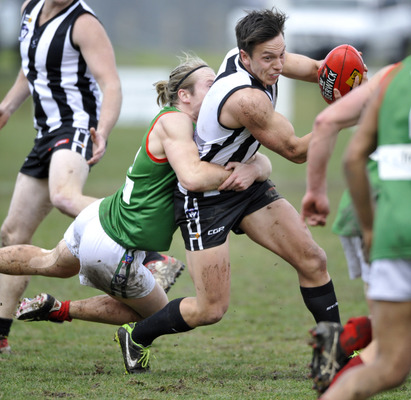
By David Nagel
Clubs in the South East Football Netball League will have to wait until 2019 before participating in a full divisional structure with the Nepean and Peninsula Leagues after AFL South East released its final recommendations to emerge from its Senior Competition Review.
The SEFNL clubs are part of the commissions overall plan to have four divisions up and running by 2020, but are not part of the initial plans for its divisional structure in 2018.
The resolution of the commission was communicated to the 31 clubs from its three senior leagues at a meeting at Frankston Park on Tuesday.
The final resolution of the commission is to implement ‘Option 1’ – a ‘Full Divisional Structure’ – from its draft recommendations released in early June. But it will be implemented in the following stages:
• 2018 – A divisional structure between MPNFL Clubs. Division 1 and Division 2 comprising a mix of Nepean and Peninsula clubs. Existing SEFNL competition to remain in its current form for 2018.
• 2019 – A full divisional structure incorporating the 2 Divisions of MPNFL and the SEFNL clubs, into a minimum of 3 Divisions
• 2020 – Pending total AFLSE senior club numbers, the creation of a 4th Division to assist with the introduction of newly established or transferred clubs.
So they are the facts – but where does it leave us all now?
Some of the MPNFL clubs played their first card shortly after the announcement, taking the first steps in removing themselves from the AFLSE governance model.
If those clubs – Frankston YCW, Karingal and Mt Eliza from Peninsula, and Dromana, Frankston Bombers, Hastings, Pearcedale, Rosebud, Rye and Sorrento from Nepean, are successful with the move, and successful in reinstating an MPNFL Board as its governing body, they would become the only league in the state not to be governed by one of the 13 AFL Regional Commissions.
It’s worth remembering that it was only in June 2015 that the former MPNFL Board resigned.
“We take this action in response to the vote of ‘no confidence’ that was passed by a large majority of both Nepean and Peninsula league clubs at recent private meetings,” was the board’s reason for the collective resignation.
The 22 MPNFL clubs are certainly not fully united with the push, with some of the remaining clubs from Peninsula and Nepean not even aware that the push against AFLSE was going to take place!
And SEFNL – well its structure is already feeling the pinch with Hampton Park members voting 88-7 to apply for a move to the Southern Football League at a Special General Meeting held at the club on Tuesday night.
Redbacks’ president Mick O’Brien has been in constant communication with Southern CEO David Cannizzo, and is meeting with AFLSE Regional General Manager John Anderson, and SEFNL’s representative on the commission, Ryan Ford, to discuss the way forward for his club.
It’s inevitable that Hampton Park – a club with strong ties to SEFNL clubs since 1954 – will be playing in different surroundings next year.
It’s sad…they will join Dingley (2006), Devon Meadows (2011) and Keysborough (2014) as clubs to have left the SEFNL competition in recent times.
So what are the pros and cons for SEFNL clubs after AFLSE finally handed down its decision?
The eight clubs that will remain, Beaconsfield, Berwick, Cranbourne, Doveton, Narre Warren, Officer SFC, Pakenham and Tooradin-Dalmore, are not enthusiastic about the prospect of playing in an eight-team competition next year, but a small portion have turned the corner and are remaining positive.
At least they now know where they stand.
They have the option of uniting, and looking to join a neighbouring league en masse, or go it alone to seek new homes which would fracture and eventually break the SEFNL competition.
And there are some positives to emerge from last night’s decision.
The new structures would appear to be locked in for the next three years, but the delay in including SEFNL provides an opportunity to explore new and exciting options going forward.
Cross-commission and league talks can begin in earnest, and AFLSE should feel obliged to look over the horizon and not just in its own backyard. Everyone from the commission to the clubs should work together now to explore every single option at their disposal.
And netballers, well they should feel relieved because their predicament is one of the reasons why the full-divisional structure will not go ahead in 2018. The imbalance between competition structures and facilities would have made a divisional structure a disaster next year, but now the authorities have the chance to provide a smooth transition and get it right for the following year.
But – with appeals an option and special meetings being called for – this current chapter in the story is far from over.
And we won’t have to wait long for the next instalment.






